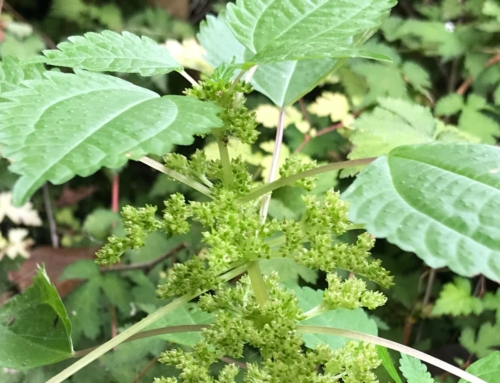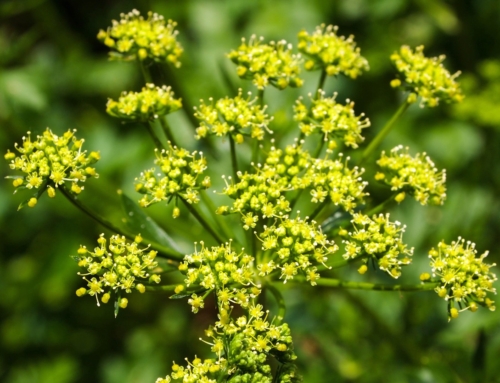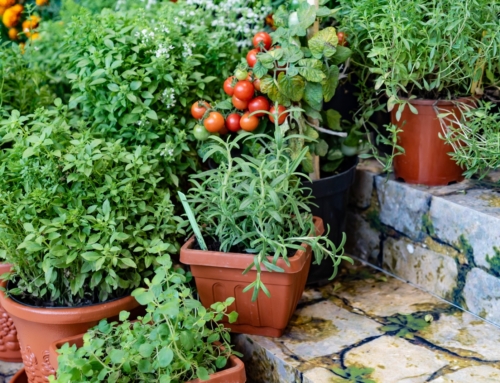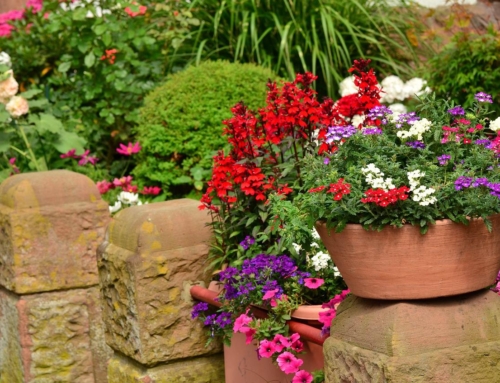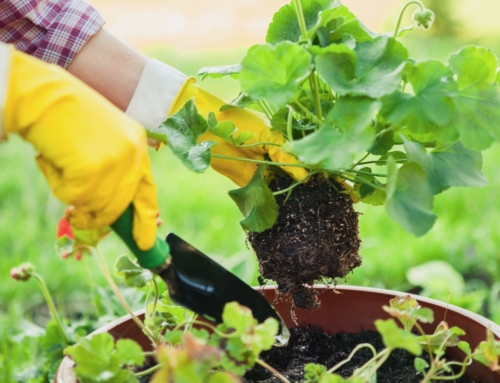
Growing vegetables in our garden is not only fun, it also encourages more nutritious eating. Unfortunately, many people simply lack the space to do so. Container gardening allows vegetable gardening to happen in small spaces. As a result, it invites all kinds of people to take part. With a little bit of planning and some Tender Loving Care (TLC), growing vegetables in containers allows us to have delicious, edible produce in just about any situation. There is no such thing as a “brown thumb” vegetable grower anymore.
Container gardening with vegetables has no digging or tilling, is virtually weed-free, is inexpensive to get started (especially if you want to start with seeds) and overcomes many barriers to the backyard garden. Containers are movable when looking for that “just right” light, wind, and temperature condition, come in a variety of sizes and shapes to customize to a location, are easy to maintain when they are located at your fingertips, and can be designed to fit most types of vegetables, including plants, such as cucumbers, that would naturally be spreaders.
The Keys to Success
The keys to successful container gardening vegetables are space, sunlight, container choice, growing media, water, and fertilizer. Like all container plants, however, the ultimate key to success is simply TLC. They depend on you to watch them, water them, move them around (if needed), and feed them.
Location and sunlight are your first considerations. Southern and western exposures will be the sunniest and warmest for sun-seeking vegetables. Warm-season crops (tomato, pepper, eggplant, squash, cucumber) will need 6-8 hours each day of direct light each day, while cool-season crops (lettuce, spinach, Asian greens) only require 3-5 hours of direct light each day. Sunny locations increase water needs. Hence, the location should provide easy access to a water source as you may need to water some of the plants daily. Heat absorption can be higher in some locations versus others. Watch out for dark colors and heat pockets created by brick, concrete, and reflective surfaces.
Now that you have chosen that perfect location, you need to pick that “just right” container. Again, like other types of container gardening, containers can be temporary or permanent, practical/utilitarian or whimsical/artistic, expensive or free. Know how much room your crop needs to grow at its maximum size, and how you plan to store the containers when not in use. Containers can be recycled plastic, buckets, wooden crates, ½ of a whisky barrel, kids wading pools, or traditional hypertufa troughs. Avoid treated lumber as well as materials that are not suited for outdoor use. Watch out for dark colors (heat absorption) and porous materials that can dry out faster (requiring more watering). ALL CONTAINERS MUST HAVE A MEANS TO DRAIN!
Media Mixes
Time to fill the container – starting with the growing media. Most of the same rules apply for vegetable containers as other container gardens. Commercial soil-less mixes work great. Garden soil should never be used by itself as it is heavy (hard to move), holds water (can drown roots), and could make disease/weeds a problem. Adding compost to your growing media of choice is always a good thing. Try to avoid reusing growing media from previous years unless you are sure there have been no disease problems the previous season. You will need to fertilize more frequently with reused growing media. If you want to create your own mixtures for your pots some good media mixtures for vegetable container gardens include:
- 100% soil-less mix
- 25% garden soil + 75% compost
- 25% soil-less mix + 25% garden soil + 50 % compost
- 25% garden soil + 75% soil-less mix
- 50% soil-less mix + 50% compost
Plant Options are Extensive
Now to add some plants. Just about any vegetable can be grown in containers, but some popular ones include salad greens, peppers, eggplant, tomatoes, beans, chard, beets, radish, squash and cucumbers. Seeking out “bush” or “dwarf” varieties make it easier for what would normally be larger plants, but you still need to match the crop to the container. Salad greens, Asian greens, mustards, garlic, and radish only need 4-6 inches of growing medium as they have shallow root systems. Beans, beets, chard, carrots, cabbage, pepper, eggplant, tomato, and squash all need 8-12 inches of growing medium to be successful. Spreading plants can be trained on trellises, such as cucumbers and squash to minimize their space needs.
See Grow Vegetables in Containers for an extensive list of container gardening vegetables, recommended container size, plant spacing, and helpful notes.
Vegetable containers can be mixed and matched just like living flower containers. Even vegetables can provide a very dramatic look with a wonderful fragrance. Be sure your plant combinations are compatible, specifically around full growth size, light and watering needs, and tolerance for heat. Some combinations to consider:
- Beans, carrots, and squash
- Eggplant and beans
- Tomatoes, basil, and onions
- Lettuce and herbs
- Spinach, chard, and onions
- Tomatoes, basil and carrots
- Cucumber and lettuce
Note: Avoid mixing beans, onions, and garlic; carrots with dill or fennel; tomatoes or squash with potatoes; and onions with beans and peas.
Simple Care Strategies
With your container assembled, water is going to be your constant friend. As previously mentioned, watering needs will vary depending on container size, location temperature and wind conditions, sunlight, and humidity. The goal is to keep your growing media moist, but not soggy. Using a soft stream of cool water, add water slowly until you see it drain out the bottom. Note, large, mature plants need more water than younger plants. Consider setting up a self-watering system if keeping up with the watering needs may be a challenge for you.
Container vegetables will need regular fertilizer, no matter the growing media. Nitrogen, a nutrient that is required in large amounts for vegetables, is often the challenge as it is a highly soluble nutrient that is easily lost through watering. Quick crops, such as lettuce, that mature in 35-45 days may need to be fertilized several times even though they have a short growing season. Long-season crops, such as tomato, cucumber, eggplant, and peppers, should be fertilized every couple of weeks. Both fast-acting soluble “plant foods” mixed with water or pelletized slow-release fertilizers that work over the course of 2-4 months will suffice.
You are now ready to design, shop, and plant your ultimate vegetable garden! Remember, container gardens rely heavily on your TLC for success. So have some fun all season long while you cultivate your edible container garden.
By Liza Cameron, Hennepin County Master Gardener volunteer
